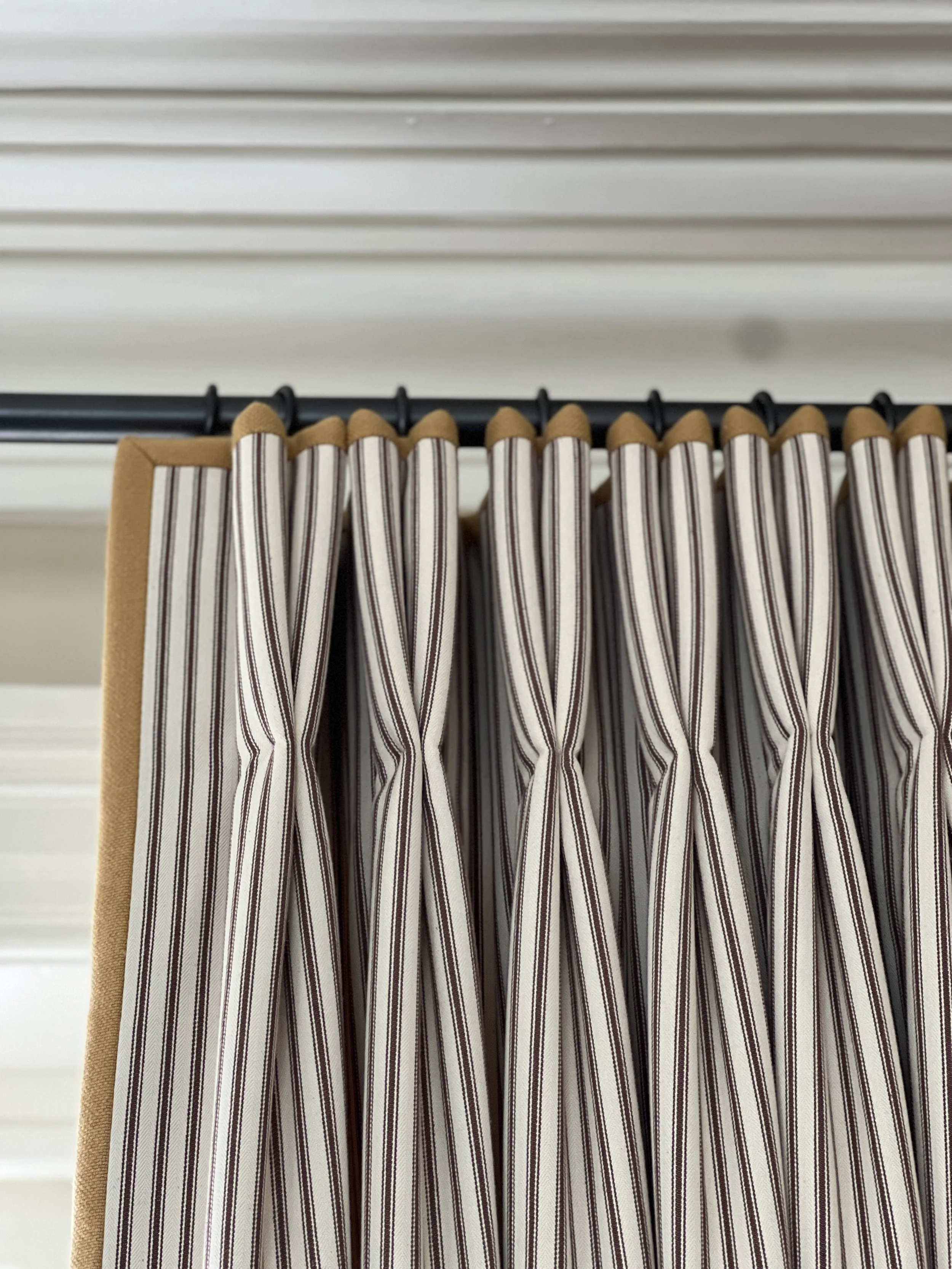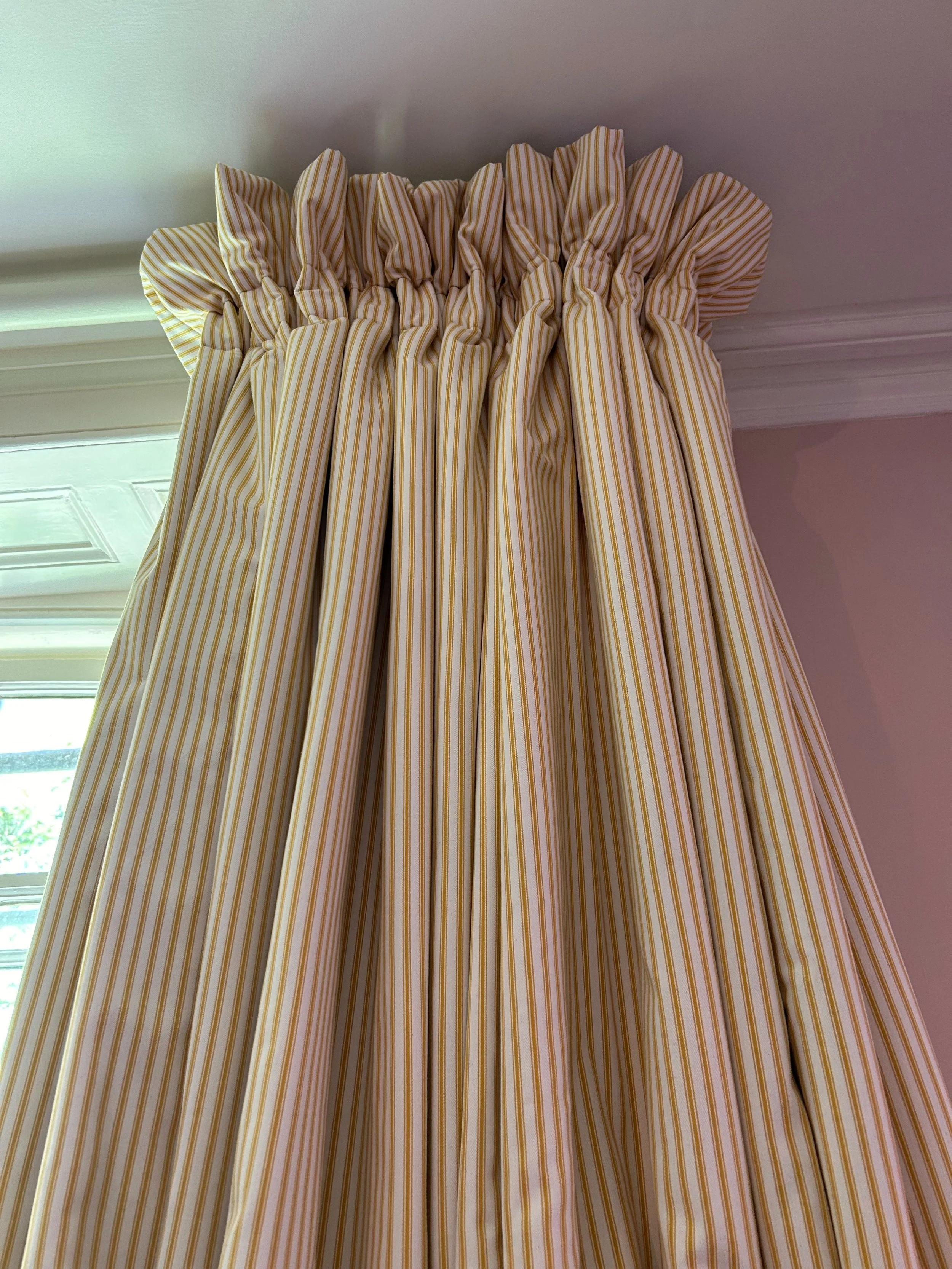Gathered Headings
Hand-gathered headings are perhaps the oldest and most traditional of all curtain headings. I often encountered these during my time with the National Trust. There's something inherently charming about the slightly uneven, organic look of a hand gather, which can be created to any depth, with or without a lovely ruffled stand-up.
Like pleated headings, these can be made with lined or interlined curtains and look equally beautiful on a soft, unlined linen for a romantic, breezy effect. Hand-gathered headings typically feature a hand-stitched brass hook on the back, making them a bit of a commitment since they aren't easily adjustable. They are also time-consuming to create, making them the most expensive heading option, with hand-smocking being the most intricate form.
Alternatively, gathered curtains can be made using tape, with the most common being the pencil tape. Here, pleats are formed by pulling cords in the tape to evenly gather the fabric. While often associated with ready-made curtains, when done well and combined with interlining or a ruffle top, they can be an economical solution that also offers flexibility in width and length—ideal if you plan to move them to another window someday.
Gathered headings, whether hand-made or tape, offer a more relaxed look and don’t allow for pleating to pattern. This means that with heavily patterned, two-tone fabrics, you might end up with uneven blocks of pattern, so it's worth considering this before choosing.

